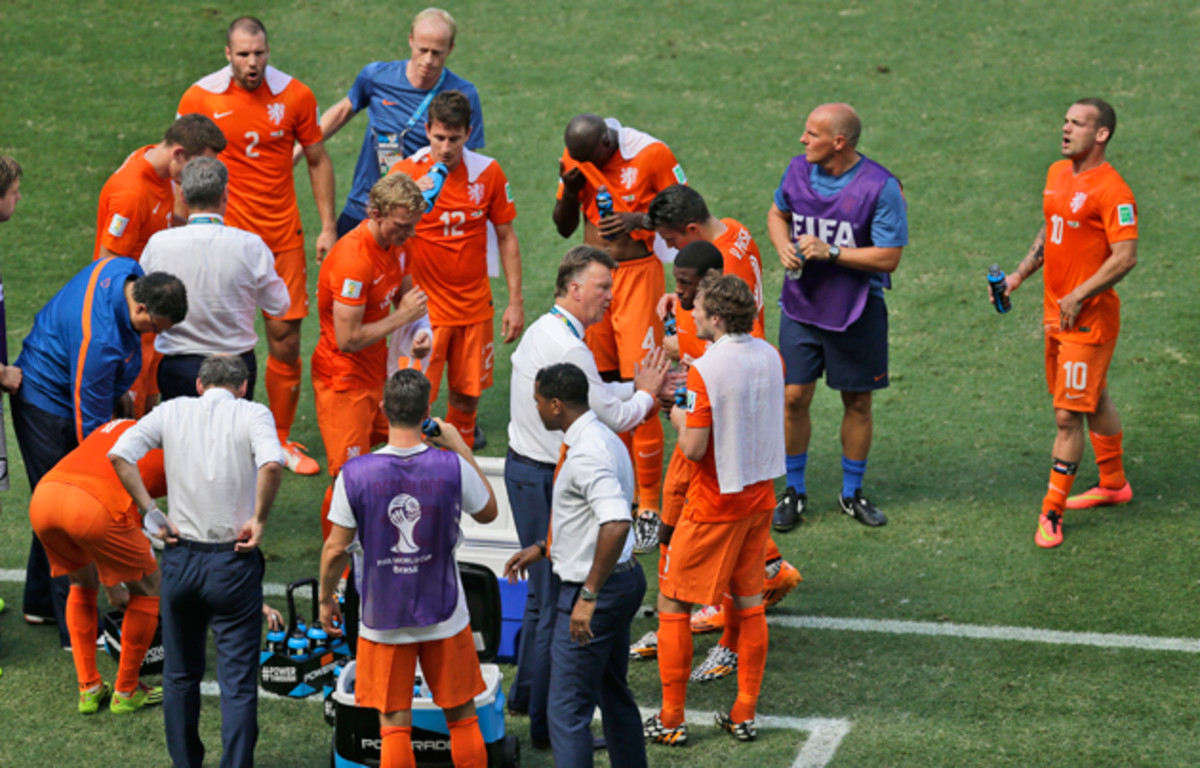The Science Behind World Cup Success

The World Cup challenges coaches and players with sub limitations, lack of recovery time, and the heat of Brazil. And where sports have always suggested that working harder means playing better, the actual science of soccer preparation and recovery suggests otherwise.
The humidity and heat in Brazil have necessitated cooling breaks for the first time in World Cup history, players are visibly drenched in sweat, and can be seen stretching out cramps mid-game, and injuries have affected almost every team in the tournament. So what’s the key to successfully preparing and playing on the game's grandest stage? Shawn Arent, an associate professor in the Department of Exercise Science and Sport Studies at Rutgers and a member of the national staff of the US Soccer Federation, emphasizes recovery for players throughout the Cup and how science can benefit the game.
“In soccer, that is one thing that we are not good enough about, the recovery part. The idea surrounding the sport is to go, go, go, a lot of other sports are better about rest and recovery, and at the end of this World Cup, the teams that manage the rest and recovery the best throughout the tournament will be successful,” says Arent.
Off-field Athlete Gear Goes High-tech for the World Cup in Brazil
The challenge to monitor recovery leading up to the tournament goes beyond the player’s participation with their national teams. Many of the best players in the world came directly from a club season, in which they have been competing for months.
Some of the world’s elite players flooded the roster of the Champions League Final, where Real Madrid faced Atletico Madrid, in a nail biter that took place on May 24. “A good portion of the Spain team was on those two teams,” says Arent. Less than three weeks later, the World Cup kicked off. “And they go into the World Cup and they fall apart,” adds Arent.
Reaching an athletic peak for their clubs and then turning around and preparing the body to peak for tournament play is physically impossible even for world class athletes, according to Arent. “The effort that was put into that final and the level of play, allows no way for those players to peak for both that game and the World Cup,” he says.

With heat and humidity in Brazil comparable to Texas in July, and travel between cities on the off days, the factors going into recovery during the actual tournament provide coaching staff and players with more challenges. Oscar Pareja, head coach of FC Dallas, faces similar challenges throughout the MLS season and emphasizes the need to adapt to the environment, “There is a need to be flexible with the weather and training because we have to be prepared for upcoming games that you have soon, but you also need to be prepared for games in the future,” says Pareja.
Science has a growing a role in the game, and if used correctly heart rate monitors, GPS trackers, and monitored recovery devices can make player regeneration more efficient. “Where many teams struggle is that you can’t half use science and kind of follow it but [also] kind of just go with your gut. It wont work,” says Arent.
The evidence of teams already using technology can been seen throughout the tournament as players remove their jerseys revealing heart rate monitors strapped around their chests. Whether their teams are using the devices correctly is up for question, but according to Arent, “The teams' knowing that the technology exists is a step in the right direction.”
How the U.S. is Trying to Build a Better World Cup Team From Scratch
In order to maximize the benefits of science, according to Arent, coaches need to fully buy into it and bring in a science staff, a performance staff, and a medical staff, because the best coaches in the world are really good at soccer but they aren’t trained in exercise science.
Pareja realized the benefit of heart rate monitors to guide the team’s recovery in Texas, where the heat and humidity play a large role, but the affect of the temperature cannot always be seen by the naked eye. “We use heart rate monitors every time we step on the field, tracking the players training loads,” he says. “You can see the difference in the training load data based on the weather and heat.”
In a tournament in which teams play anywhere from three to seven matches, the heart rate monitors could reveal when teams should train on their off days and when they should recover. “I’ve realized just as important as training is, recovery is equally as important,” says Pareja.
While preparation varies from team to team, the impact of tournament play effects all of the players, and, according to Arent, the teams that stand out and at the end of the tournament are those who emphasize recovery throughout the tournament. “Ideally what is happening towards the end is that whoever is the least tired is successful. You may not be the best team technically or tactically in the last game but you’re still fit and more recovered than the other team is.”
The challenge of winning a soccer tournament could be aided by science — but only if the coaches are willing to fully adapt in order to excel.
